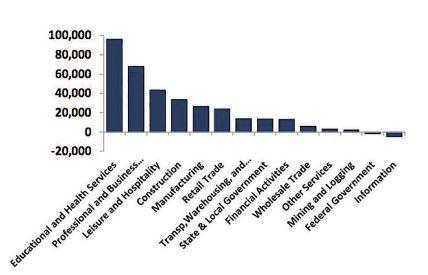
3 minute read
INSIGHTs & INTUITION
What works best -- and what seems to work less well -when orienting new employees?
At AE2S, Day One means we onboard the individual to “team member” status, and our focus is on their success.
Throwing a new team member to the wolves does not help anyone. So, we surround new team members with valuable information and access to resources, a rich history of going beyond expectations and an excellent compensation and benefits package to take care of them and their families.
Before a new employee starts, we make sure their computer, email and voicemail are set up so they can hit the ground running. The first day on the job, we schedule an in-depth one-on-one meeting to review the company handbook, provide benefits information and answer questions. Building this strong foundation creates a positive start, and the commitment continues long after with continuing education, “Lunch and Learns” and team-building events.
At Arvig, our new-hire orientation is one day, but our on-boarding takes a full year.
And it’s important not to rush through this process. That’s why we have a well-thought-out training plan that begins at the time the job is accepted.
We urge new employees to focus on the company culture from their first day, so the newcomers immediately can get a feel for the company and know they’re part of something bigger.
We follow up in three to four months and then again after a full year. This shows the employees just how important they are to the team.
Steve Schuster
PRESIDENT
To successfully onboard new employees, you must make them feel welcomed and appreciated. Then, you need to help them understand how their role fits into the overall mission of the company. This provides purpose to each new employee.
If you put a new employee on an island by himself or herself, you risk having the employee be disengaged and searching for his or her purpose.
We’ve found at Network Center, Inc. that giving new employees time with each area of our business helps them to better understand their contribution and the impact they’ll have across the organization.
This goes a long way toward helping them understand our entire company, not just their respective department.

Something we have found that doesn’t work as well is not having a well thought out training plan. People join us at different levels of experience, and if we have not taken the time to develop a good training plan, they will not be set up with the tools they need to do their job.
DIRECTOR, HUMAN RESOURCES
Our employees are treated as valued customers, and our goal is to provide a highly engaging and personalized experience.
We know that a great onboarding program starts before the first day on the job. That’s when the thirst for knowledge is at the Everest peak.
We are transforming our programs using digital technology to simplify processes, personalize experiences and make learning activities more targeted.
New employees will learn about culture, policies and practices, self-service and how their role will drive consumer value anytime and anywhere via mobile.
When they walk through the door, the paperwork is all finished, and they have the tools and resources to be successful on the job. They feel at home. That’s what we want.
minnesota
The university’s overall index, referred to as the Business Conditions Index, ranges between 0 and 100. An index greater than 50 indicates an expansionary economy over the course of the next three to six months.
Chart Source: David Flynn, professor and chair, Department of Economics and Finance, University of North Dakota
kiplinger’s 10 most and least tax-friendly states, 50 states
July 2009 to July 2017
Chart source: Minnesota Department of Employment and Economic Development
ASSEMBLED BY TOM DENNIS, PRAIRIE BUSINESS EDITOR
Minnesota
Second least tax-friendly “ The North Star State hits hard with income tax. t added a new top income tax rate of 9.85 percent in 2013. But what makes Minnesota really stand out s that its owest income tax rate s 5.35 percent “Property taxes are on the high side. It 's one of Kiplinger's top ten least tax-friendly states.”
Zillow Housing market overview
The graph indicates Zillow Home Value Index, zillow’s estimate of median home values in each of the named communities.
Source: Creighton University Mid-American Economy Report Source: Kiplinger.com Chart Source: Zillow.com












